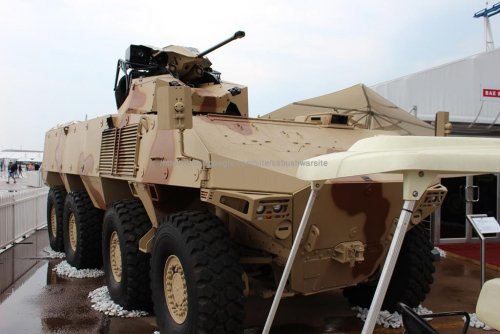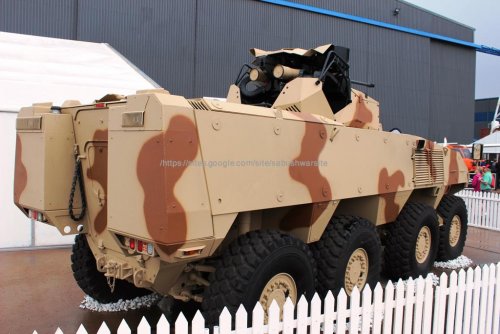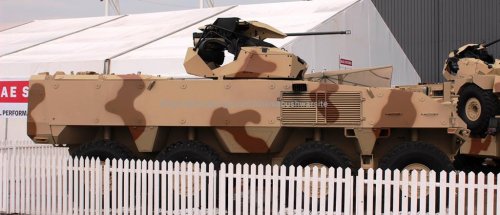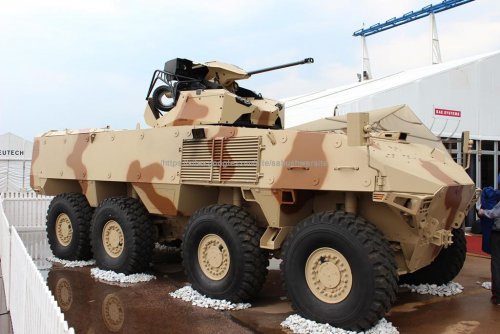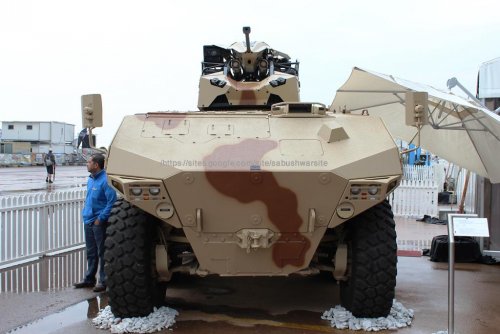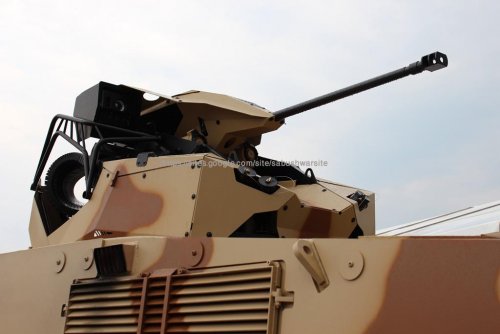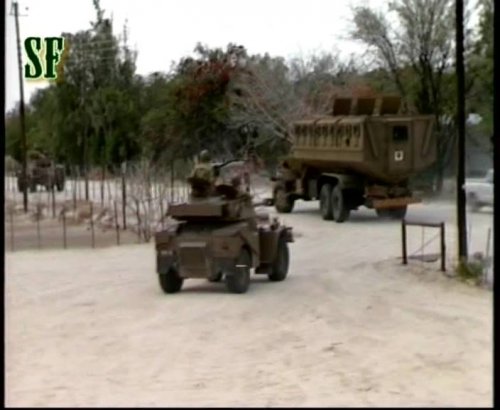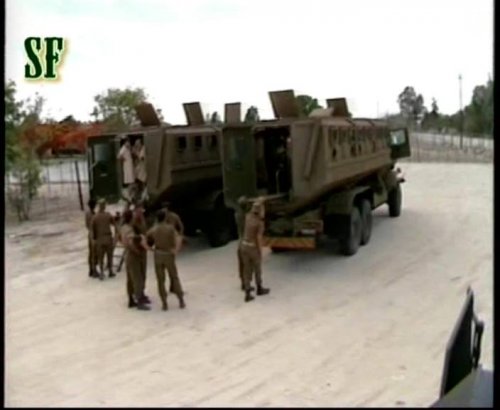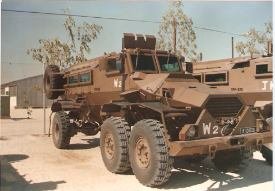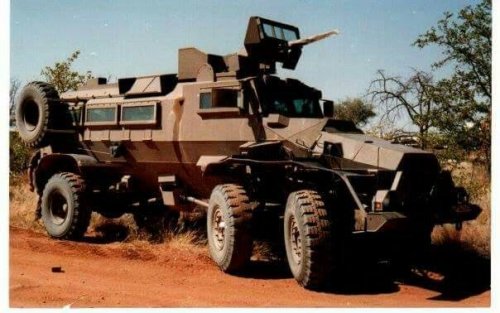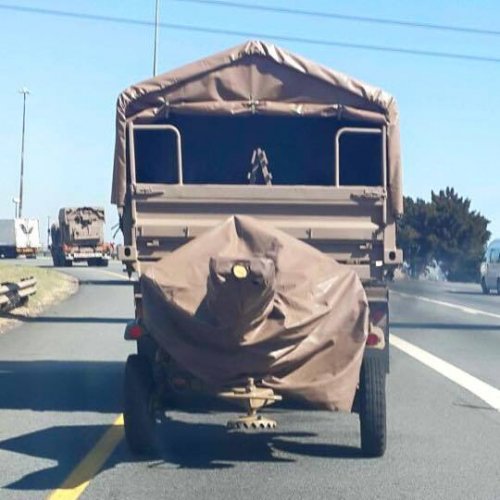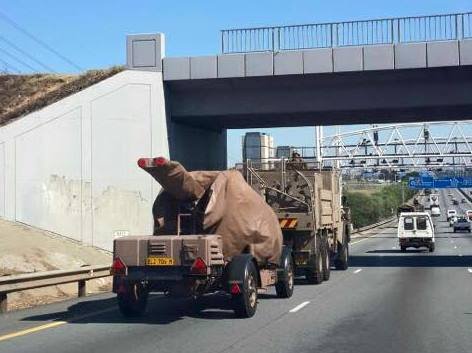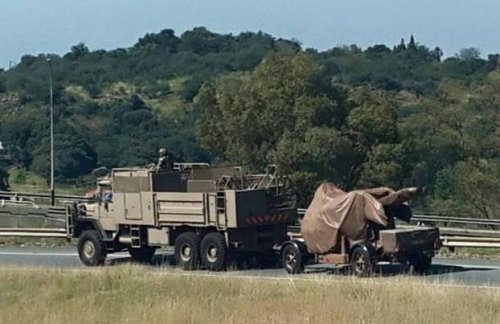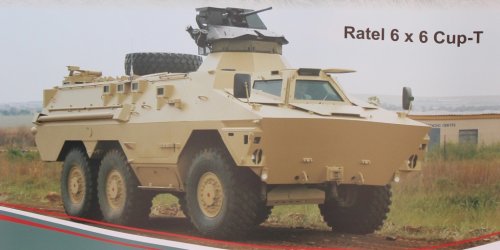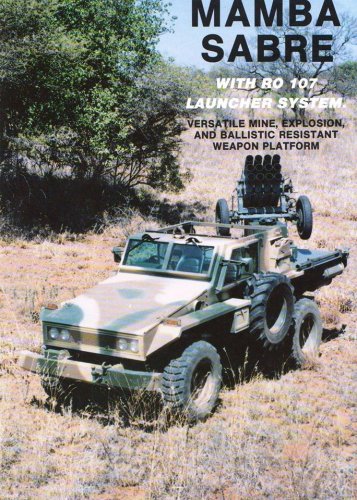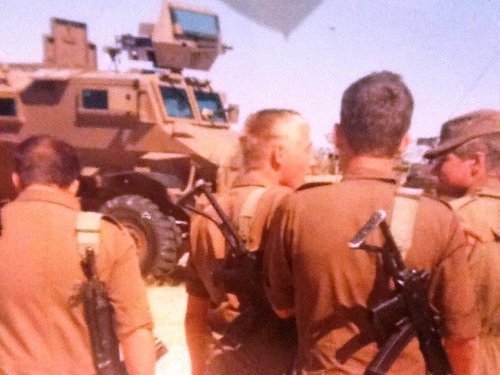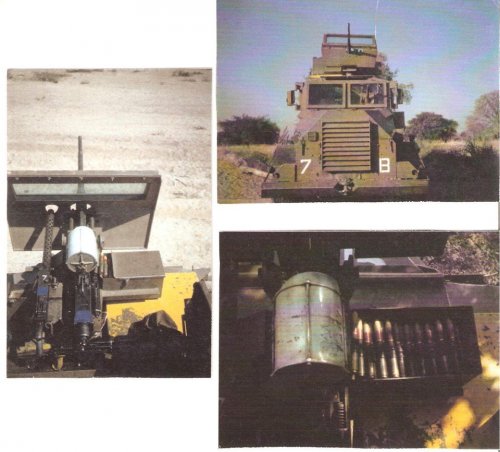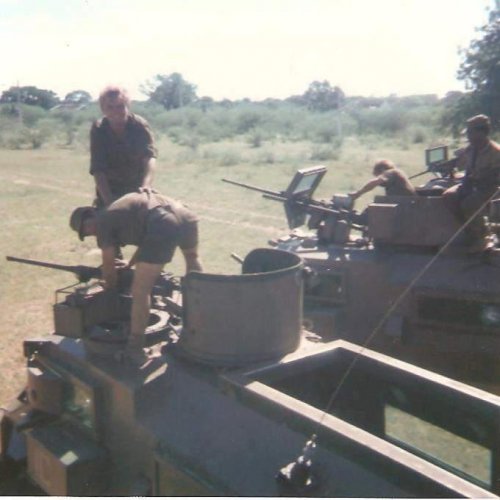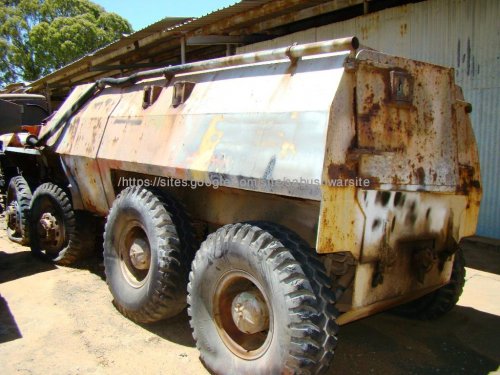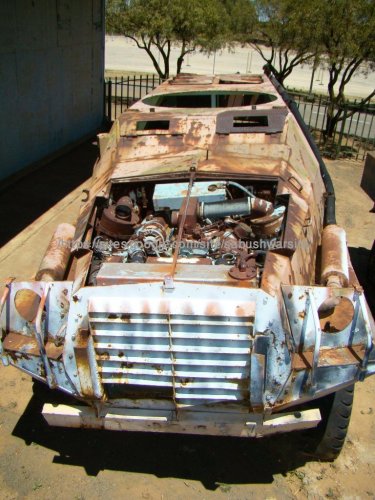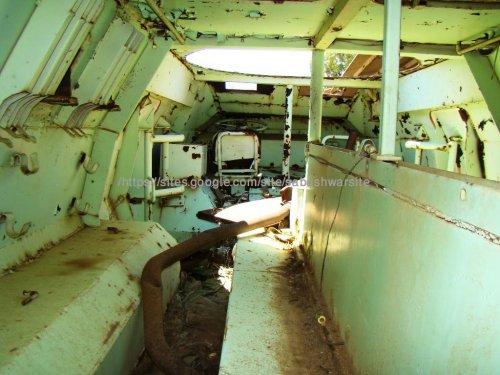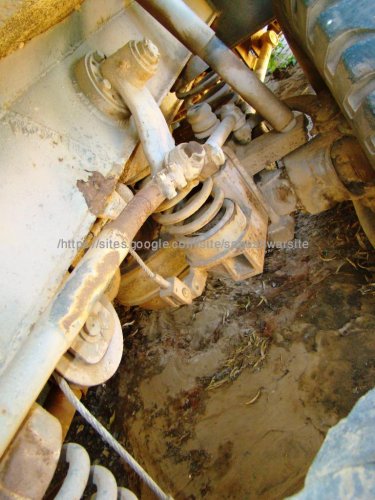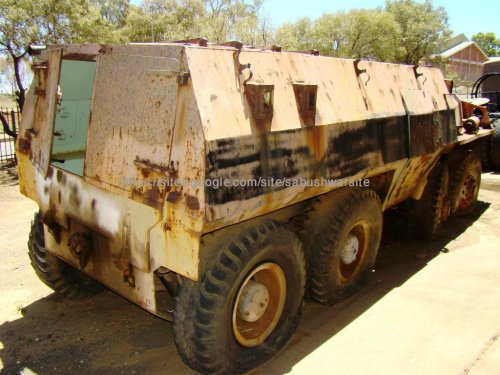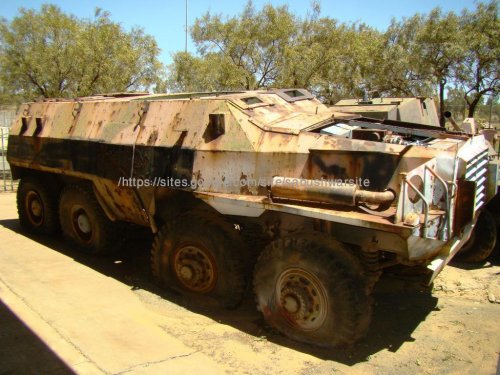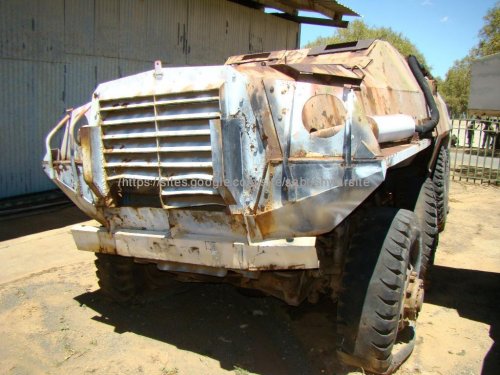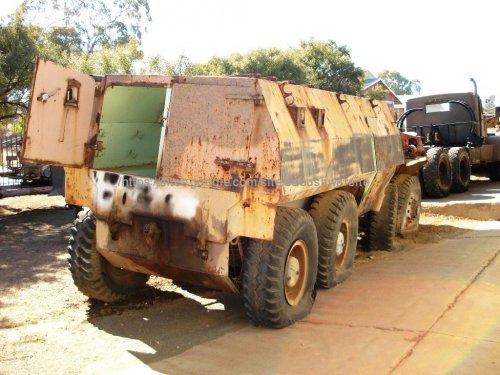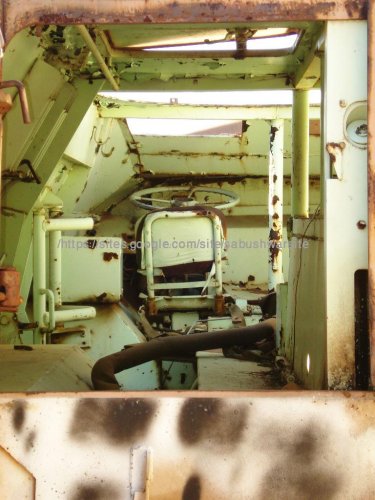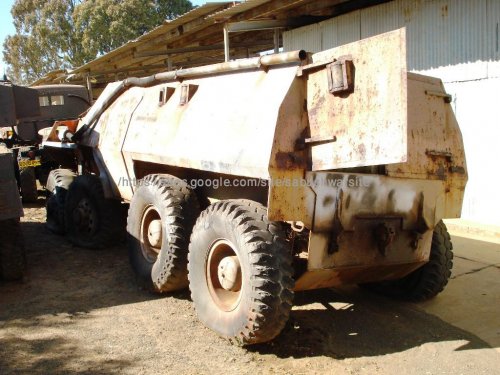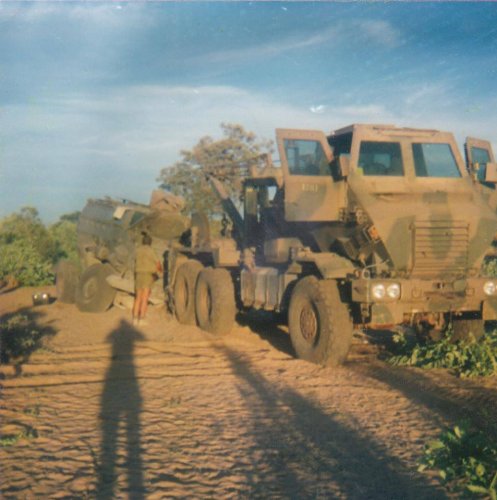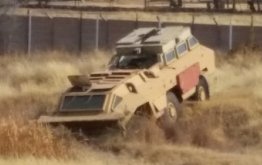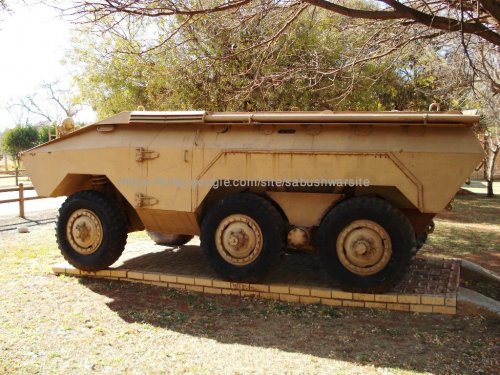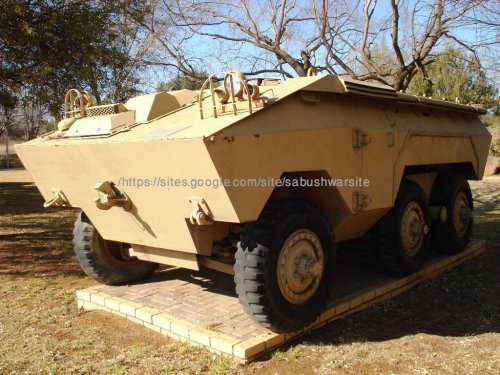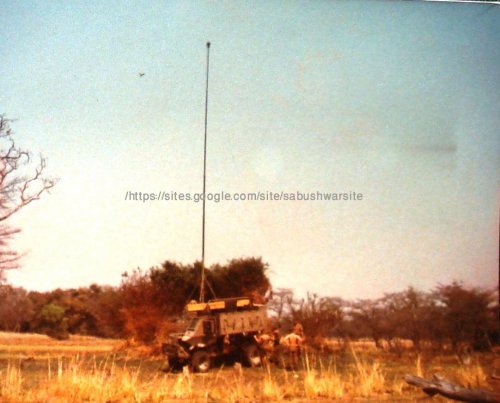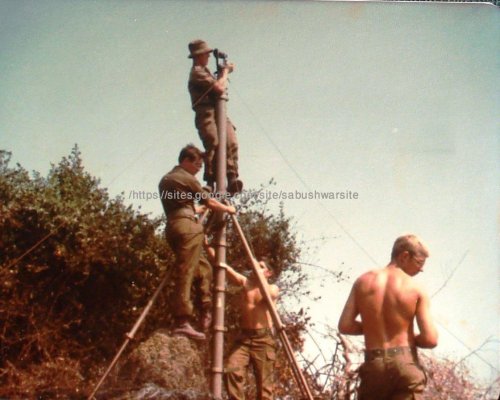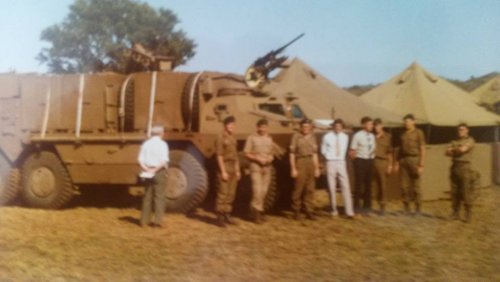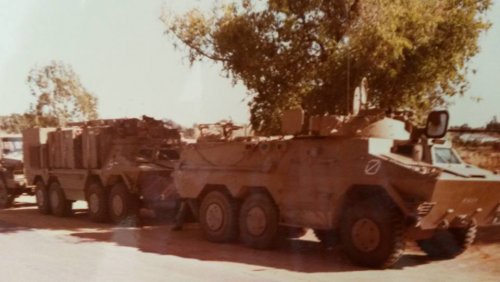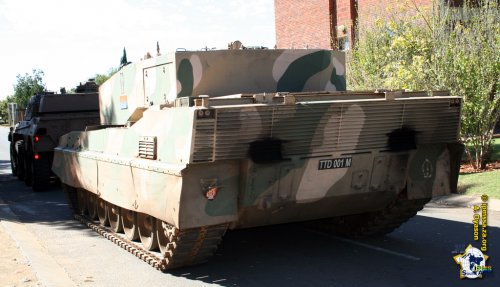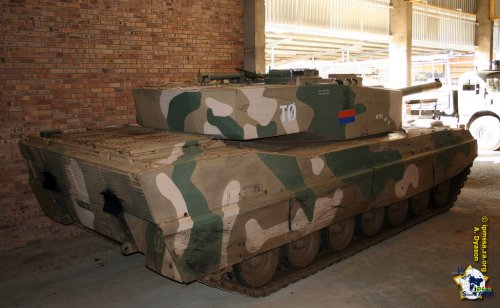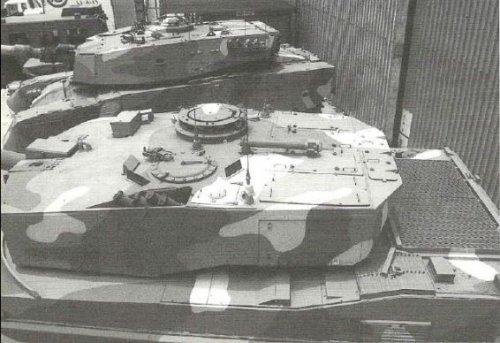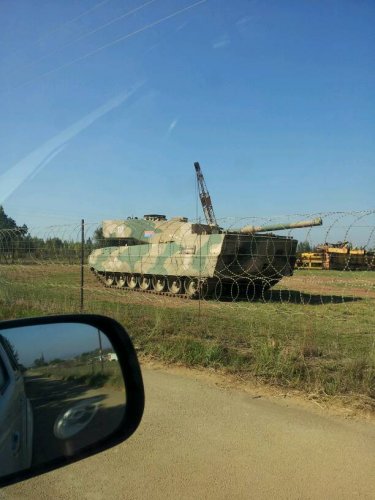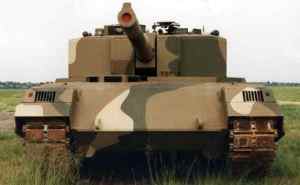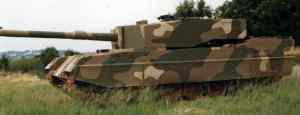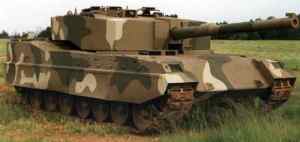sa_bushwar
ACCESS: Secret
From the www:
RG41, is a South African 8x8 armored fighting vehicle (AFV) with mine resistant protection developed by Land Systems OMC, a subsidiary of BAE Systems. The RG41 was designed as an affordable modern AFV can be utilized in a variety of roles, including infantry section vehicle, a command vehicle, an ambulance, recovery vehicle and engineer vehicle. Its large payload capability allows additional armour to be added to the RG41 and verity of weapon systems such as the Alliant Techsystems's 25mm M242 Bushmaster mounted in a tactical response turret, the TRT-25 remote weapon station (RWS).HistoryLand Systems OMC, a subdivision of BAE Systems in South Africa, began development of the RG41 in early 2008 as a private venture after seeing a need for an affordable combat system. To meet this requirement, the RG41 employs an ITAR (International Tariff in Arms Regulation) free design and consists of commercial off-the-shelf (COTS) components [1] that are not subject to US International Traffic in Arms Regulations.
Would have been an ideal, indigenous, and in my opinion better Ratel replacement than the Patria. Any new news on further development of the RG41?
RG41, is a South African 8x8 armored fighting vehicle (AFV) with mine resistant protection developed by Land Systems OMC, a subsidiary of BAE Systems. The RG41 was designed as an affordable modern AFV can be utilized in a variety of roles, including infantry section vehicle, a command vehicle, an ambulance, recovery vehicle and engineer vehicle. Its large payload capability allows additional armour to be added to the RG41 and verity of weapon systems such as the Alliant Techsystems's 25mm M242 Bushmaster mounted in a tactical response turret, the TRT-25 remote weapon station (RWS).HistoryLand Systems OMC, a subdivision of BAE Systems in South Africa, began development of the RG41 in early 2008 as a private venture after seeing a need for an affordable combat system. To meet this requirement, the RG41 employs an ITAR (International Tariff in Arms Regulation) free design and consists of commercial off-the-shelf (COTS) components [1] that are not subject to US International Traffic in Arms Regulations.
Would have been an ideal, indigenous, and in my opinion better Ratel replacement than the Patria. Any new news on further development of the RG41?

